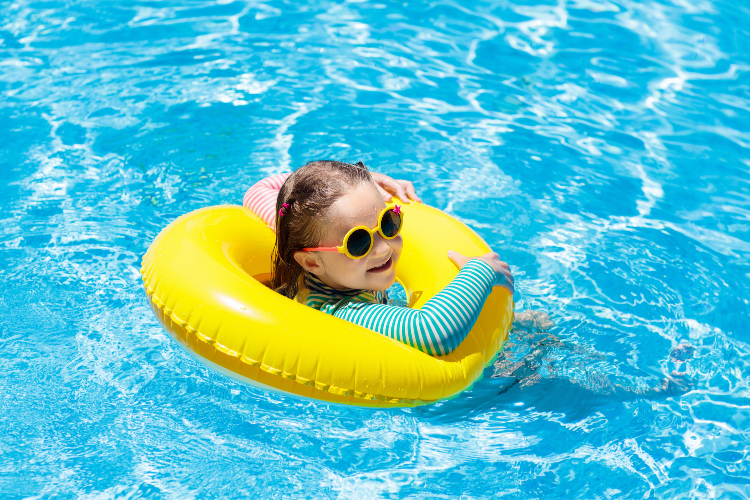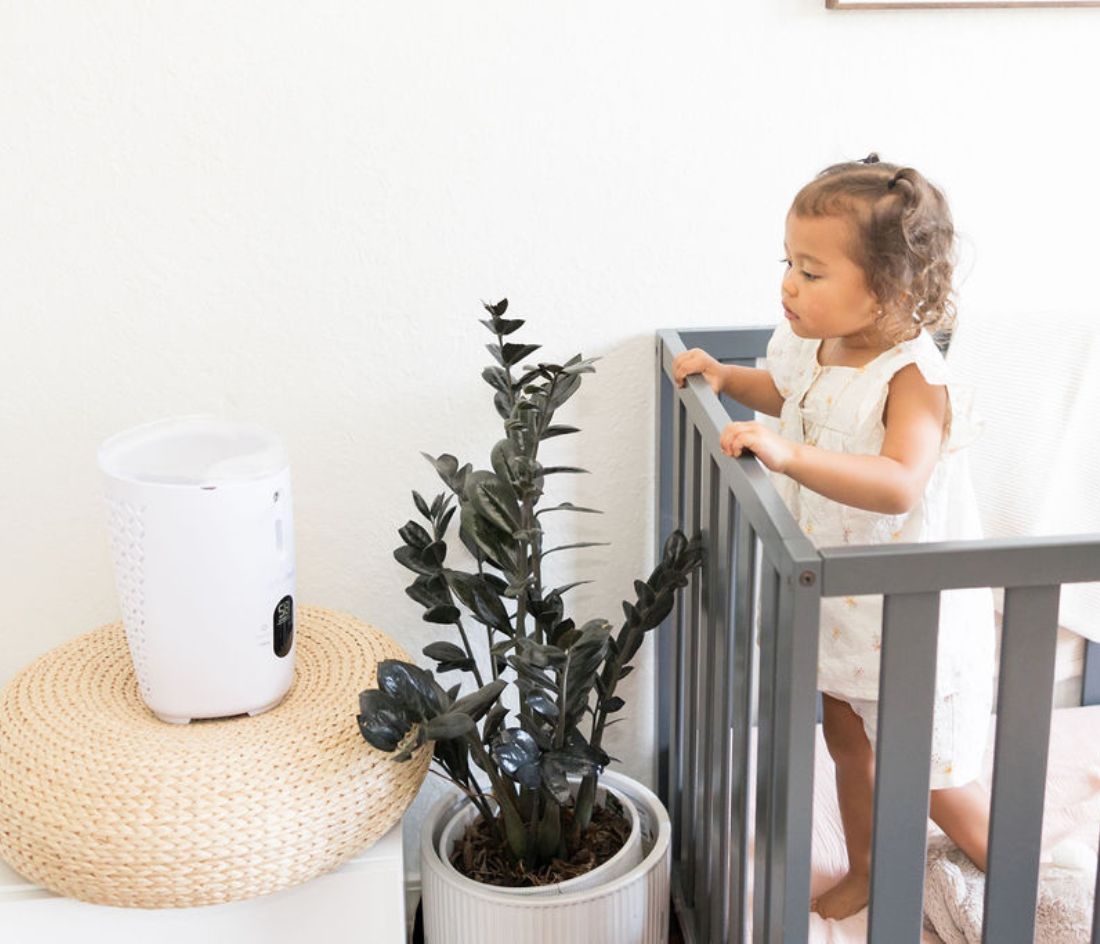Guest Post By Genevieve Kane, MSN, RN
Summer break is here! And with summer comes more playtime, outdoor time, and fun camps and activities for older children.
While summer break is a time for fun and adventure, it is also essential to understand a few key summer safety tips to avoid injuries. Understanding the most significant risks to kids' safety and how to keep them safe helps everyone enjoy summer!
Summer Safety Tips: How to Avoid Injury Over Summer Break
Here are six essential summer safety tips to keep your kids having fun all summer—and hopefully help avoid unnecessary trips to the doctor!

Avoid Sunburns
Summer break means long, warm, and sunny days. While most enjoy the extra sun, protecting yourself and your children from sunburns is vital.
Per the MD Anderson Cancer Center, just one or two blistering sunburns during childhood or adolescence can double the chance that your child will develop melanoma throughout their lifetime. This is why it is important to apply sunscreen regularly and correctly.
Here are a few summer safety tips to keep your child safely protected from too much sun:
- Consider clothing and hats with UV protection.
- Use sunscreen with an SPF of 30 or higher.
- Apply sunscreen at least 30 minutes before going outside.
- Apply sunscreen generously. For example, a family of 4 should easily use an entire 16-ounce container of sunscreen if outside all day.
- If doing activities that involve sweating or water, apply sunscreen at least every 2 hours.
Remember that sunscreen is generally not recommended for babies younger than 6 months. Instead, try to keep young babies covered in UV-protective clothing and in the shade.
However, if that’s not possible, the American Academy of Dermatology Association (AAD) says a minimal amount of sunscreen can be applied to babies. Since babies tend to have sensitive skin, the AAD recommends mineral-based sunscreens. Mineral-based sunscreens contain either zinc oxide or titanium dioxide and are less likely to irritate their skin.
Stay Hydrated and Watch for Heat Exhaustion
Kids have a lot of energy! Their running and playing, combined with high summer temperatures, can lead to heat exhaustion. One study linked higher summer temperatures with more pediatric emergency department visits.
Help your kids stay safe in the summer by encouraging them to drink plenty of water and take breaks as needed. On especially hot days, search for parks or playgrounds with shade.
As a summer safety tip, to help keep kids cool, consider stocking up on frozen treats that can also help hydrate, such as fruit juice popsicles. You can buy them from the store or pick up molds to make them yourselves!
If your child has spent time outside in the sun or warm weather, here are several signs and symptoms of heat exhaustion according to the American Academy of Pediatrics (AAP):
- Pale skin
- Lots of sweating
- Feeling nauseous
- Dizziness
- Fainting
- Weakness
- A mild fever of up to 102℉
If you think your child may be experiencing heat exhaustion, it is crucial that they take a break, cool down, and rehydrate. Heat exhaustion can lead to heatstroke, which is a life-threatening emergency. If in doubt, seek medical advice through your healthcare provider or go to an emergency department.
Practice Water Safety
One of the most crucial summer safety tips is practicing water safety. According to the Centers for Disease Control and Prevention (CDC), drowning is a leading cause of death in children. More children between the ages of 1-4 years die from drowning than any other cause of death in this age group.

Swimming can be a lot of fun and a great way to cool off in the summer! However, in order to avoid injury, it is important that children swim safely. Here are recommendations on how to stay safe around water, per the AAP:
- If you have standing water in your home (i.e., a hot tub, swimming pool, koi pond, bird bath, pond, etc.), ensure it has a fence around it that your child cannot climb or undo on their own. A self-latching, self-closing gate that is too high for a toddler to reach is ideal.
- If your child goes into the water, designate an adult to watch that child. Consider using a card as a physical reminder that they are the “watcher” and trade-off adults regularly to prevent fatigue. For example, consider passing the card off every 15 minutes. The watcher should avoid drinking alcohol or doing anything that could alter their ability to pay attention.
- Place child-proof locks on doors that lead outside where a child may find water.
- Immediately empty containers of water after use (i.e., a children’s pool, a cooler filled with ice, buckets used for cleaning, bathtubs, garbage cans that may collect water after a rainstorm, etc.).
- If around a body of water such as a river or lake, ensure all children wear properly fitted life jackets.
What these summer safety tips around water all have in common are blocking unintended access to water for young children, making sure there is a responsible adult to watch children near water at all times, and placing flotation devices on kids when appropriate.
Protect Yourself from Bugs and Insects
With summer comes mosquitos. Ticks also thrive in warm summer temperatures. Consider using bug spray or bug spray-treated clothing and hats to protect yourself and your kiddos during summer.
The AAP recommends that infants younger than two months avoid DEET-containing repellents. However, per the AAP, children older than 2 months can use DEET-based bug repellents in concentrations between 10-30% DEET.
Other important bug safety tips include:
- Only applying bug spray to clothing and exposed skin.
- If going into the woods or areas with ticks, wear long pants and sleeves.
- Wash off bug repellent at the end of the day.
- Consider placing mosquito netting over strollers or pack-n-plays for young children. Just ensure it is secured and the child is supervised so they don’t get tangled.
Per the AAP, alternatives to DEET include picaridin-based sprays at concentrations of 5-20% picaridin. If you’re looking for a natural alternative, oil of lemon eucalyptus can be used. However, the AAP recommends only using oil of lemon eucalyptus on children older than 3 years old. Additionally, the product should contain no more than 30% oil of lemon eucalyptus.
Wear a Helmet
Another summer safety tip is to wear a helmet. Summertime for toddlers can mean balance bikes, trikes, and scooters or going for a ride on a caregiver’s bike. For older kids, it can mean biking, rollerblading, skateboarding, or horseback riding.

This list is not exhaustive, and to keep kids' heads safe and prevent injury, it is essential they wear a helmet when appropriate. Make sure the helmet fits appropriately.
Also, just like car seats, helmets expire. It’s a good idea to swap out your helmet if it shows any signs of wear or is three years old. Over time the materials can break down, and the helmet may not work as effectively.
Have a Well-Stocked First Aid Kit
No matter how prepared you are, injuries and illnesses are bound to happen. Kids may get a scraped knee, come down with a summer cold, or experience a bee sting.
An additional summer safety tip is having a well-stocked first aid kit to treat minor illnesses and injuries. Ideas of items to include are:
- Bandaids of various sizes
- Tweezers
- Triple antibiotic ointment
- Antiseptic
- Hand sanitizer
- Gauze
- Medical Tape
- Hydrocortisone cream
- Children’s acetaminophen and ibuprofen (i.e., Children’s TylenolⓇ and MotrinⓇ, respectively)
- An antihistamine like Children’s BenadrylⓇ in case of an allergic reaction
- Saline spray or drops for stuffy noses
- NozeBot nasal aspirator for the inevitable summer cold
You may include different items depending on your family’s unique situation and summer activities. However, this is a good place to start.
Looking for more like summer safety tips and avoiding injuries over summer break? You’ll find these helpful:
- Raising Mentally Strong Kids—What Parents Need To Know
- 20 Genius Travel Hacks For Parents
- 10 Daycare Tips For Working Moms That Only A Parent Would Tell You
- Epic Sleep Tips For Traveling With Your Kiddos
- What To Do When Your Baby Or Child Gets Sick On Vacation
Summer Safety Tips Key Takeaways
Summer break should be a time for fun and play! By following these six summer safety tips, you can be well on your way to a fun and safe summer. Wear sunscreen, keep kids hydrated, avoid heat exhaustion, and be vigilant around water. Also, protect yourself from bugs and insects, remember to have your child wear a helmet, and have a first aid kit on hand for when accidents or illnesses do happen.
Genevieve Kane, MSN, RN, is a mother of four and a registered nurse with a background in pediatrics. When she's not working, you can find her cooking up tasty family dinners or keeping up with her kids on a hiking trail in her home state of Colorado.
The Nozebot is a battery-powered suction device designed to clear nasal congestion in babies and children.



